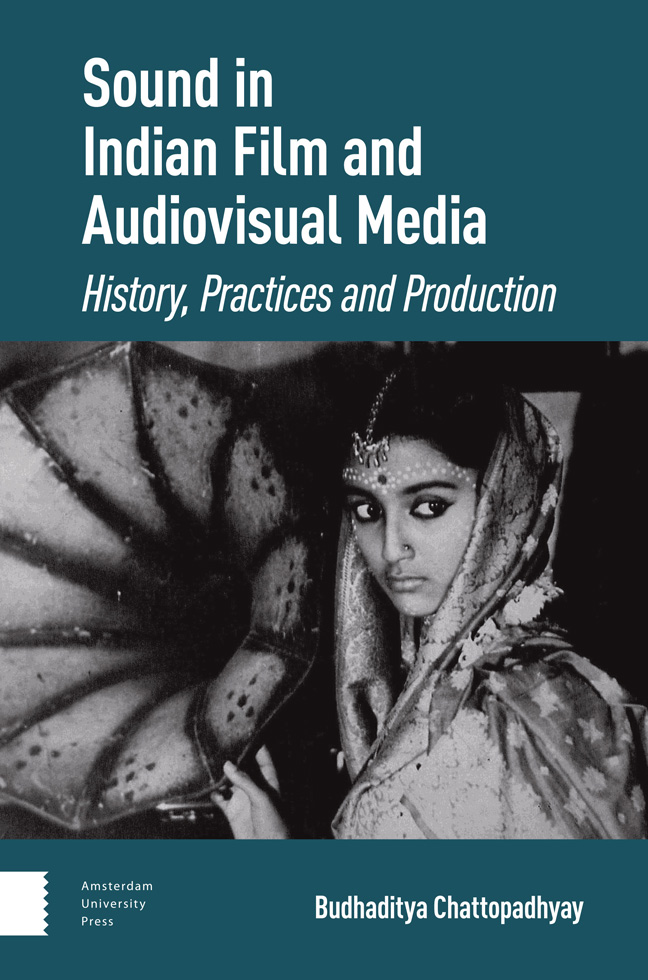Book contents
- Frontmatter
- Contents
- Acknowledgements
- 1 Introduction
- 2 The Technological Frameworks
- 3 Direct Sound and Early Talkies
- 4 Sound of the Golden Age
- 5 Tracing the Sound in Satyajit Ray’s Film-works
- 6 Popular Films from the Dubbing Era
- 7 Parallel Sounds, Radical Listening – Part I
- 8 Sholay, Stereo Sound and the Auditory Spectacle
- 9 The Advent of Digital Sync Sound
- 10 The Surround Revolution
- 11 Sound in the Audiovisual Media Arts
- 12 Parallel Sounds, Radical Listening – Part II
- 13 A Concluding Voiceover
- Bibliography
- Filmography
- Index
8 - Sholay, Stereo Sound and the Auditory Spectacle
Published online by Cambridge University Press: 20 February 2024
- Frontmatter
- Contents
- Acknowledgements
- 1 Introduction
- 2 The Technological Frameworks
- 3 Direct Sound and Early Talkies
- 4 Sound of the Golden Age
- 5 Tracing the Sound in Satyajit Ray’s Film-works
- 6 Popular Films from the Dubbing Era
- 7 Parallel Sounds, Radical Listening – Part I
- 8 Sholay, Stereo Sound and the Auditory Spectacle
- 9 The Advent of Digital Sync Sound
- 10 The Surround Revolution
- 11 Sound in the Audiovisual Media Arts
- 12 Parallel Sounds, Radical Listening – Part II
- 13 A Concluding Voiceover
- Bibliography
- Filmography
- Index
Summary
Abstract: Stereophonic mixing was introduced much later to Indian cinema than it was in Hollywood and had a relatively shorter lifespan. Following information on historical developments, critical analysis of sound in film and finding corresponding evidence in conversations with Indian sound practitioners, in the eighth chapter I demonstrate that stereophonic mixing, as an extension of magnetic recording and dubbing practices, rendered the cinematic imagination of this period as something spectacular; extravagant song-and-dance sequences shot in exotic locations and action scenes packed with studio-manipulated and synthetic sound effects which appealed to a mass audience.
Keywords: Indian cinema, magnetic tape, analogue media, stereophonic mixing, sonic space
Stereophonic Mixing
Although stereophonic mixing was feasible as early as the 1940s in Hollywood, film scholars James Buhler et al. recognize how, ‘it would not be systematically exploited by the industry until the introduction of Cinemascope in the early 1950s’ (Buhler, Neumeyer, and Deemer, 2010, p. 336). However, in Indian cinema, stereophonic mixing was introduced much later than in America and had a shorter lifespan; Dolby digital and its multichannel formats replaced multiple transitory stereo formats in just a few years.
Cinemascope was first used in India for Kaagaz Ke Phool (Dutt, 1959), but the film’s sound mix was still mono. Monaural mixing in the final mixdown for the projection and exhibition of films had been standard practice in India since the arrival of the talkies. Indian filmmakers indeed took quite some time to expand their sound palette. Raj Kapoor’s Around the World (1967) would be one of India’s earliest films to explore stereophonic mixing. Although a few filmmakers used the technology in the early 1970s, it wasn’t until later in the decade that a series of films popularized the stereophonic sound experience. Sholay (‘Embers’, Sippy, 1975), in particular, marked a historic moment in Indian film sound largely due to these technical innovations.
By the late 1970s, stereophonic sound technology came into full force when mainstream filmmakers like Prakash Mehra, Manmohan Desai, and Feroz Khan began using it in their work. What was the ramification of stereophonic technology’s advent in cinema? According to film sound scholar Gianluca Sergi, stereophonic mixing made it possible to create an extra off-screen space in which part of the focus is left for the viewer to imagine. Stereo sound also made it possible for the viewer to engage with the sound’s directionality.
- Type
- Chapter
- Information
- Sound in Indian Film and Audiovisual MediaHistory, Practices and Production, pp. 143 - 154Publisher: Amsterdam University PressPrint publication year: 2023



